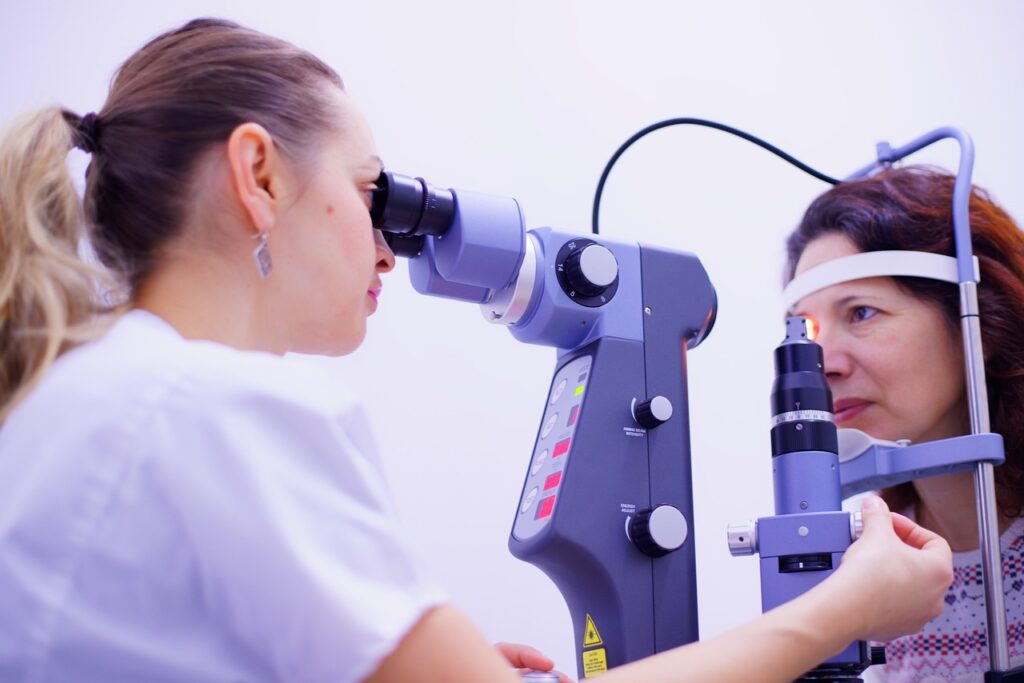In today’s digital world, screens are everywhere—computers, smartphones, tablets, and televisions. While technology has made life more convenient, excessive screen time can lead to digital eye strain (computer vision syndrome), causing discomfort and long-term vision problems.
If you spend hours in front of a screen, it’s essential to take proactive steps to protect your eyes. Here’s how you can reduce digital eye strain and maintain healthy vision in the digital age.

Understanding Digital Eye Strain
Digital eye strain, also known as computer vision syndrome (CVS), occurs when prolonged screen use leads to symptoms such as:
- Eye fatigue and discomfort
- Blurred vision
- Dry, irritated, or watery eyes
- Frequent headaches
- Neck and shoulder pain
The blue light emitted from digital screens and prolonged focus contributes to these symptoms. Over time, neglecting eye health can lead to permanent vision problems.
10 Proven Tips to Reduce Digital Eye Strain
1. Follow the 20-20-20 Rule
One of the easiest ways to reduce eye strain is by following the 20-20-20 rule:
- Every 20 minutes, look at something 20 feet away for at least 20 seconds.
- This helps relax your eye muscles and prevent fatigue.
2. Adjust Screen Brightness and Contrast
Your screen should be neither too bright nor too dim compared to your surroundings.
- Increase contrast for sharper text and images.
- Use night mode or blue light filters to reduce glare.
3. Blink More Often
People blink 50% less when using screens, leading to dry and irritated eyes.
- Make a conscious effort to blink more frequently.
- Consider using artificial tears if your eyes feel dry.
4. Maintain Proper Screen Distance
- Position your screen about 20-24 inches from your eyes.
- The top of the screen should be at eye level or slightly below to reduce neck strain.
5. Reduce Glare and Reflections
- Use an anti-glare screen filter on your devices.
- Position your screen away from direct light sources.
- Use matte-finish glasses to minimize glare.
6. Use Blue Light-Blocking Glasses
Excessive blue light exposure from screens can disturb sleep patterns and contribute to eye strain.
- Wear blue light-blocking glasses, especially if you work late.
- Enable the “Night Shift” or “Blue Light Filter” mode on your devices.
7. Optimize Your Workstation
- Adjust your chair and desk for proper posture to avoid neck and shoulder pain.
- Use an ergonomic chair and sit with your back straight.
- Keep your screen at arm’s length and positioned slightly downward.
8. Take Frequent Breaks
- Step away from your screen every 1-2 hours for at least 5-10 minutes.
- Walk around, stretch, and relax your eyes to reduce muscle tension.
9. Stay Hydrated and Eat Eye-Healthy Foods
Dehydration worsens dry eyes. Drink plenty of water and eat foods rich in:
- Omega-3 fatty acids (salmon, walnuts)
- Vitamin A (carrots, spinach)
- Lutein and zeaxanthin (kale, eggs)
10. Get Regular Eye Checkups
Annual eye exams can help detect and prevent serious vision problems caused by prolonged screen use. If you experience:
- Persistent eye discomfort
- Frequent headaches
- Blurred vision
Consult an eye specialist immediately.
Thind Eye Hospital: Your Partner in Digital Eye Health
At Thind Eye Hospital, we understand the impact of digital screens on your vision. Our expert team, led by Dr. Jaswant Singh Thind, offers:
- Comprehensive eye exams to detect early signs of strain.
- Personalized treatment plans to reduce digital eye fatigue.
- Advanced blue light protection solutions for long-term eye health.
Take Action Today!
Don’t let digital eye strain damage your vision. Protect your eyes by implementing these tips and scheduling a comprehensive eye check-up at Thind Eye Hospital today.
Click Here to Book Your Appointment Now
Take control of your eye health and enjoy a comfortable, strain-free digital experience!


